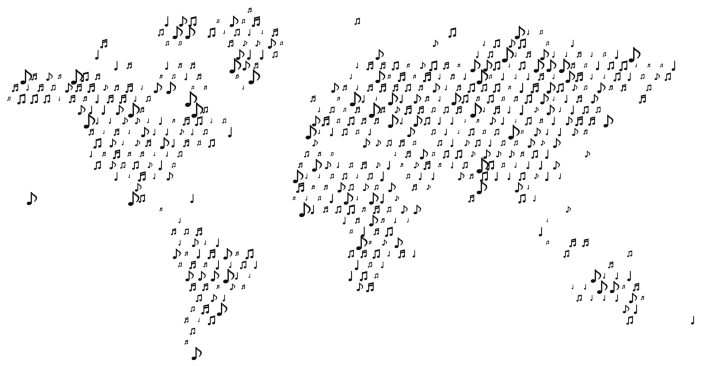Cross-cultural and interdisciplinary work is required to advance understanding of naturalistic human behaviour. Exemplifying this strategy, two Critiques in Nature Critiques Psychology take into account how notion of and responses to music diverge and align internationally.
In each society the place scientists have regarded, they’ve discovered music. Nevertheless, the specifics of how that music is produced and used varies throughout cultures. Inside a single tradition, people additionally range of their skills and affinity for creating and responding to music. Constructing upon these generalizations, two Critiques in our pages characterize human notion and responses to music.
On this difficulty, Snyder and colleagues evaluate analysis addressing the notion of the essential rhythmic parts of music. Rhythmic parts embrace rhythm, beat and metre, which listeners understand from a collection of auditory occasions akin to notes or drum hits. Metre — essentially the most complicated of those parts — is the construction that allows teams of people to coordinate when taking part in devices, dancing or singing. Notion of rhythm may be measured by way of duties akin to clapping alongside to music or reproducing a beat. Fundamental sensitivity to those rhythm parts may be seen within the first 12 months of life, however rhythm notion continues to mature all through maturity.

Credit score: olaser/Getty
Inside this developmental trajectory, people range of their responses to rhythmic parts, and a few of this variability is culturally particular. Cultures differ within the prevalent rhythm patterns of their musical traditions, and listeners are usually greatest at perceiving and reproducing rhythms which can be just like these they’ve skilled. As an example, listeners who’ve been enculturated to Western music are likely to desire the reasonable quantities of syncopation that characterize these broad musical traditions, whereas listeners with extra familiarity with the musical traditions of Turkey, Mali and Uruguay, which comprise extra syncopation, desire and extra precisely understand extra syncopation in music.
Snyder and colleagues additionally spotlight a genome-wide affiliation examine that exposed that a number of genomic loci contribute to beat synchronization. These complicated genetic components work together with expertise over a person’s lifetime and underlie particular person variations amongst individuals and adjustments inside an individual throughout growth.
Shifting past notion of fundamental rhythm parts, a Evaluate by Singh and Mehr (M. Singh and S. A. Mehr, Nat. Rev. Psychol. 2, 333–346; 2023) takes up the query of whether or not psychological responses to music, together with emotional responses (akin to evoked emotions of unhappiness or concern), behavioural responses (such because the urge to bop or clap alongside) and high-level labels (akin to figuring out a track as a lullaby), are shared throughout cultures. They conclude that many responses to music are shared throughout domains. As an example, emotional responses to music depend on the identical mechanisms as emotional responses to facial expressions and speech. Nevertheless, the early emergence of responses to music and excessive settlement throughout cultures in recognizing the perform of music recommend a point of common human adaptation to music.
Singh and Mehr additionally spotlight the function of cultural transmission in music. As an example, the rhythms that folks discover best to establish and reproduce would possibly result in these rhythms being adopted, strengthened and made outstanding inside a tradition. When individuals inside that tradition expertise music with these options, it would then reinforce their perceptual biases. The extent to which a few of these biases are primarily based in human physiological constraints or cognitive universals would result in similarities within the musical options which can be promoted throughout cultures. Comparable forces might collectively form people’ psychological responses to music (favouring responses which can be rewarding or efficient) and a tradition’s musical norms and practices.
Music scientists come from psychology, neuroscience, anthropology, music, genetics and laptop science backgrounds; we hope researchers from every of those fields can discover new insights in these Critiques. Each articles exemplify the interdisciplinary nature of music science of their creator groups and the analysis that they evaluate, leaning closely on proof from genetics and anthropology. Continued integration throughout fields of examine will result in a wealthy understanding of how people understand, use, and reply to music internationally.

